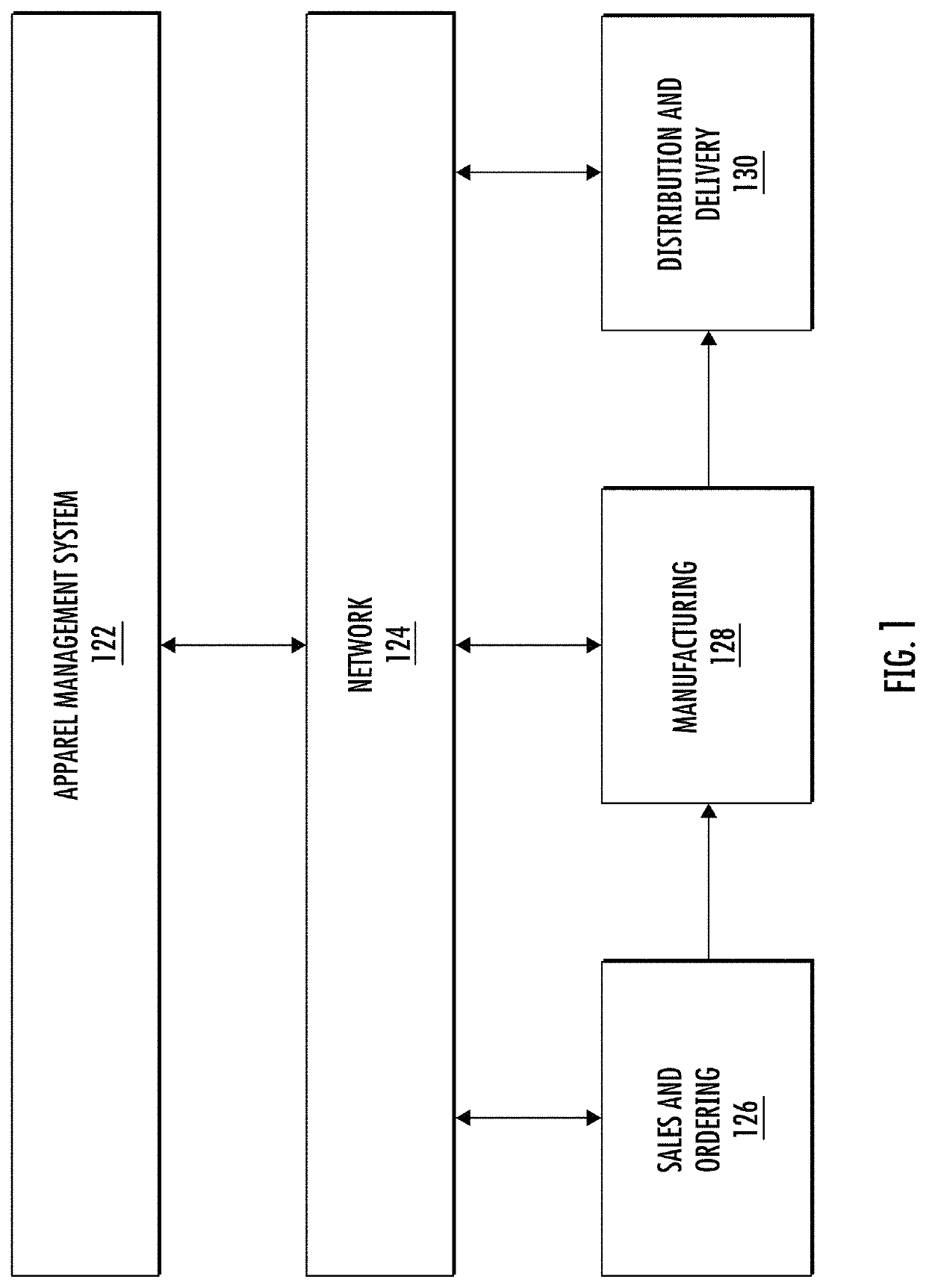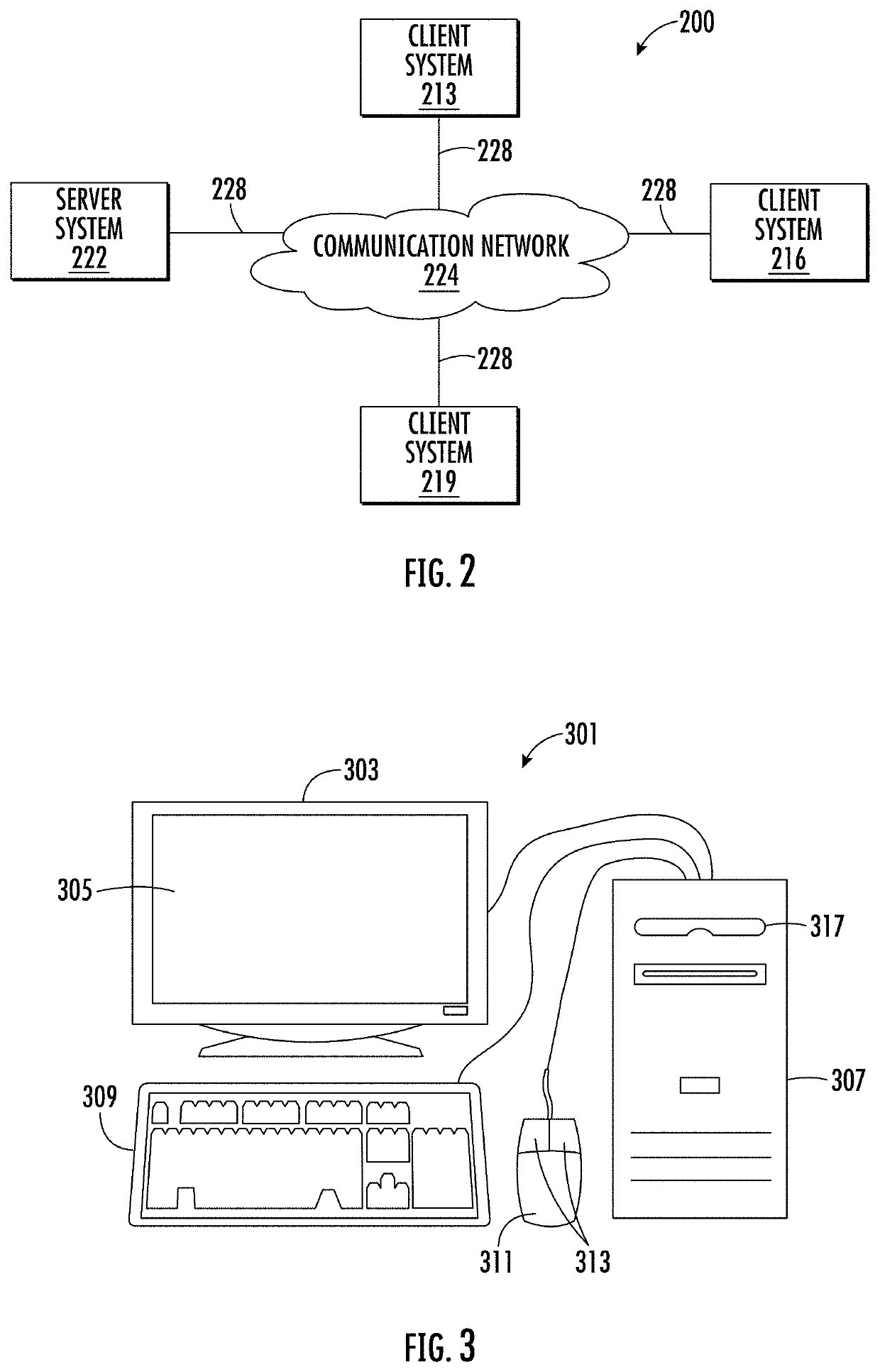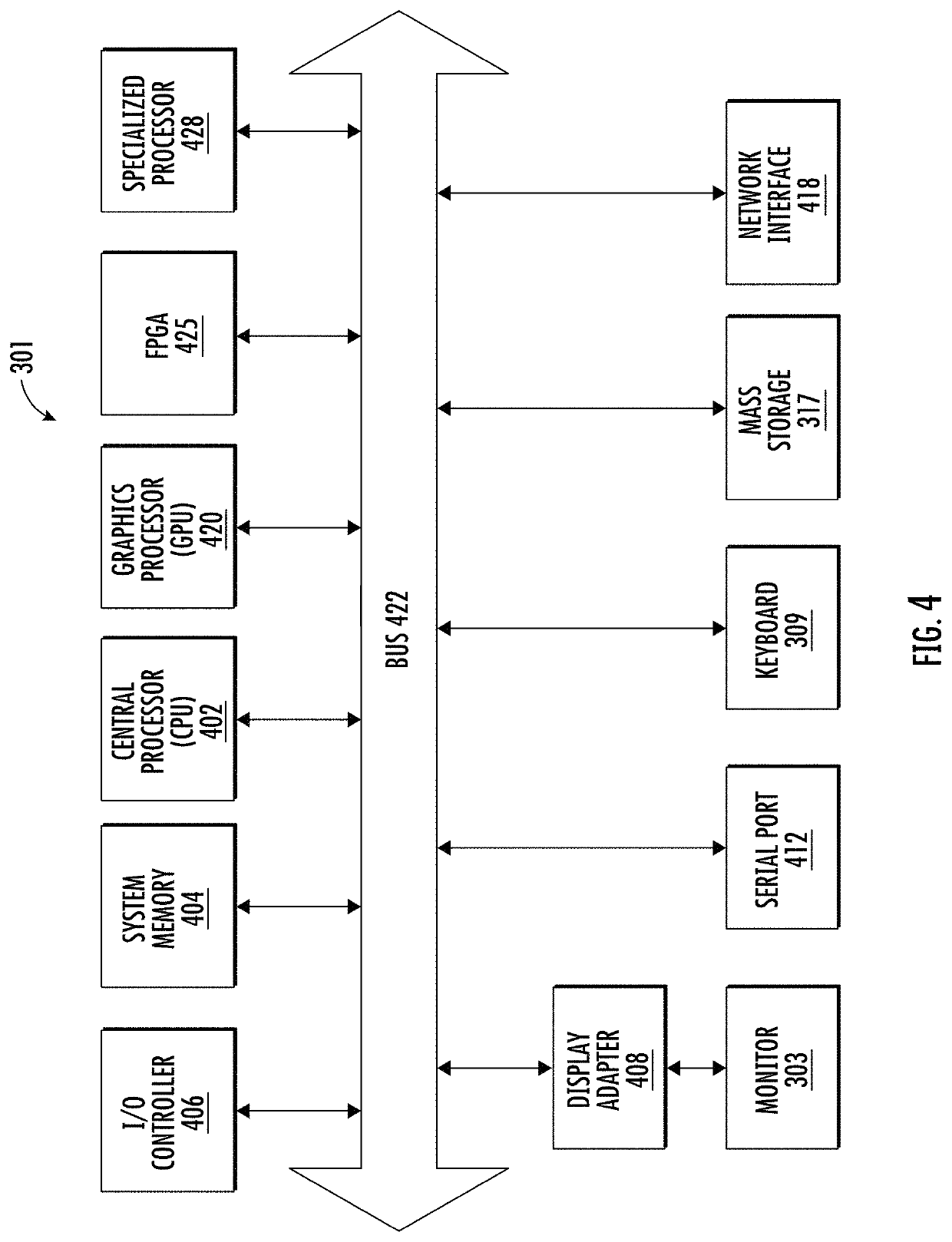Treating base templates with anti-ozone agent before storage for laser finishing
a technology of laser finishing and base templates, applied in the field of material processing before laser finishing, can solve the problems of garment color loss, color change or fading,
- Summary
- Abstract
- Description
- Claims
- Application Information
AI Technical Summary
Benefits of technology
Problems solved by technology
Method used
Image
Examples
Embodiment Construction
[0053]FIG. 1 shows a system for apparel manufacturing and sales, where the apparel can include garments that have been finished using laser finishing. There is an apparel management system 122, which controls operation of the system. The apparel management system is connected by a network 124 to components of the system, including sales and ordering 126, manufacturing 128, and distribution and delivery 130 components. The network can be a computer network, such as the Internet.
[0054]Using the sales and order component, a customer can preview and selects garments to order. The customer can be a buyer for a retail store, internal buyer for retail sales of a region, regional salesperson, or other customer. The sales process can include using a variety of tools to assist a customer with showing available products, selecting products to purchase, keeping an order within budget, accessing a history of previous orders, and customizing and selecting fits, styles, and sizes of products. As a...
PUM
 Login to View More
Login to View More Abstract
Description
Claims
Application Information
 Login to View More
Login to View More - R&D
- Intellectual Property
- Life Sciences
- Materials
- Tech Scout
- Unparalleled Data Quality
- Higher Quality Content
- 60% Fewer Hallucinations
Browse by: Latest US Patents, China's latest patents, Technical Efficacy Thesaurus, Application Domain, Technology Topic, Popular Technical Reports.
© 2025 PatSnap. All rights reserved.Legal|Privacy policy|Modern Slavery Act Transparency Statement|Sitemap|About US| Contact US: help@patsnap.com



